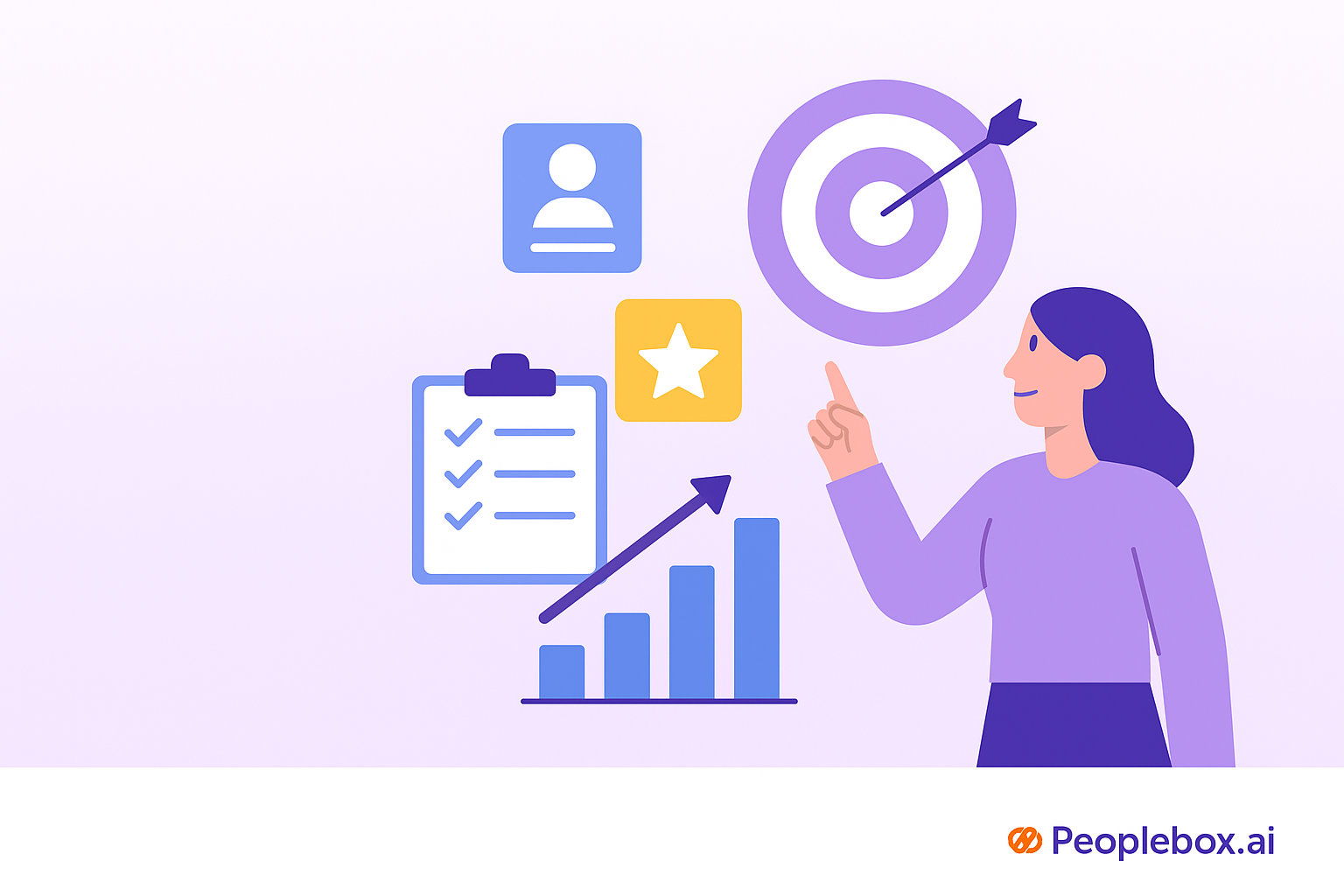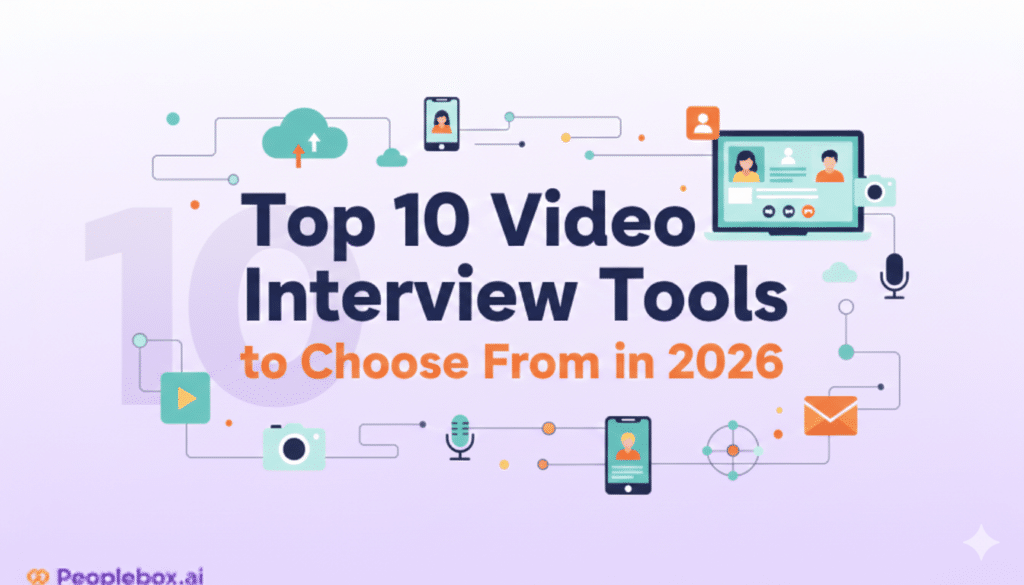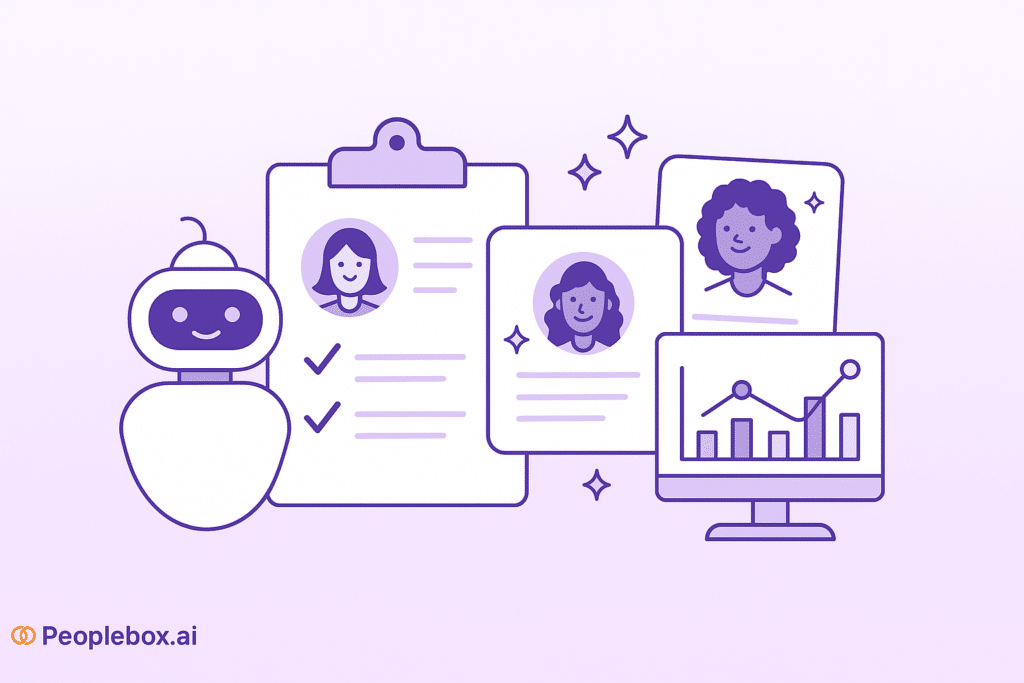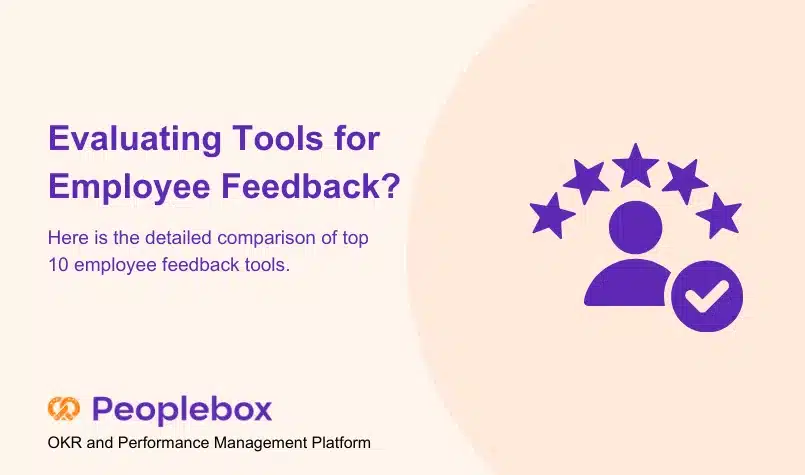TL;DR
Talent management is no longer just an HR function; it’s a strategic imperative. In this guide, we break down 9 talent management strategies for 2025 that will help you attract, retain, and develop top talent.
From setting clear goals to prioritizing employee well-being. Explore how to create a thriving talent ecosystem that drives employee engagement, performance, and business success.
Think of talent management as how a company pulls together and nurtures its biggest asset: its people. In today’s intense job market, it’s more than just HR doing its thing. It’s about making a work environment where what the person wants lines up with what the company needs to succeed.
Talent management covers everything from attracting and hiring the right people to keeping them engaged, motivated, and growing. It connects all the dots between what HR uses, who’s applying, and how the company manages talent. This way, businesses can get a jump on things without getting bogged down in tech stuff, all while keeping an eye on the bigger picture for smart talent choices.
Why Implement Comprehensive Talent Management Practices?
Implementing strong talent management practices ensures that companies don’t just hire the right people but also keep them engaged, skilled, and motivated for long-term success.
1. Enhanced Employee Retention and Engagement
How well people talk to each other, work together, give feedback, and show they care about their work all adds up to how engaged they are.
Strong communication and collaboration directly impact employee retention, because keeping people on board means they like the company and see themselves building a career there.
2. Closing Critical Skill Gaps
When a company doesn’t have enough people with the needed skills, it can slow things down and make workers feel stressed. If there aren’t enough experienced people to guide and a lack of people who can teach others, it hurts teamwork and progress.
Having a plan helps to determine what skills are needed for each role and then gives people the chances to learn and practice them so they can grow within the company.
3. Significant Cost Savings Through Better Retention
Finding and training someone new is expensive. Putting money into talent management helps to keep people around, which cuts down on those costs and makes for a stronger, more skilled team.
4. Improved Productivity and Performance
Companies where people are excited about their jobs are way more productive. Talent management makes things run smoother, gives people what they need to do their jobs, and clears the way for them to grow and add value.
Top Talent Management ideas for 2025
Staying ahead in 2025 means adopting strategies that not only attract top talent but also keep them motivated, engaged, and growing with the company.
1. Define Clear Objectives and Goal Alignment
Strategy: Clearly show how what each person does ties into what the company is trying to achieve. Make sure everyone knows how they’re making a difference.
Implementation Tips:
- Be open about what the company wants to achieve.
- Use a system like OKRs to set and track goals.
- Keep people updated on how the company is doing and how they’re helping.
- Use charts to show how goals line up and how far along everyone is.
- Have regular check-ins to make sure everything’s still on track.
2. Prioritize Employee Well-being and Work-Life Balance
Strategy: Go beyond just fixing problems. Build a culture where mental, physical, and financial health are top priorities.
Implementation Tips:
- Be open to flexible work and offer mental health support.
- Have programs that help with money and teach people how to handle it.
- Ask people what would help them feel better and make it personal.
- Watch how workloads are spread to prevent burnout.
- Check in often to see how people are feeling.
3. Employee Recognition and Rewards Programs
Strategy: Have a system in place to spot good work as it happens and give rewards that mean something to the person receiving them.
Implementation Tips:
- Don’t just do it once a year; make acknowledging good work an ongoing thing.
- Let people recognize each other, not just managers.
- Find out what rewards people want.
- Be clear about how people can earn recognition.
- Celebrate team wins as well as individual achievements.
4. Employee Engagement Through Meaningful Work
Strategy: Help people see how their work is tied to the company’s purpose and show them how they’re helping to achieve goals.
Implementation Tips:
- Connect individual projects to the company’s bigger picture.
- Provide regular feedback on how projects turn out and how they affect the business.
- Create chances for people from different teams to work together.
- Welcome new ideas and innovation from everyone.
- Mix up work assignments to keep things interesting and help people learn.
5. Internal Talent Mobility and Succession Planning
Strategy: Show clear paths for people to grow within the company and prepare them to take on key roles in the future.
Implementation Tips:
- Be upfront about how people can advance.
- Give chances to learn skills that can be used in different jobs.
- Pair people with mentors and give them chances to shadow others.
- Use data to match people with the right internal openings.
- Have leadership programs to get people ready for future roles.
6. Data-Driven Workforce Analytics and Insights
Strategy: Analyze your workforce data to make smart calls on planning, making the most of performance, and improving the company.
Implementation Tips:
- Set up dashboards for leaders at different levels.
- Guess what might happen based on past data to spot who might leave or what performance trends look like.
- Keep track of how diverse and inclusive the company is.
- Plan workforce needs regularly based on data.
- Decide where to put money for training and development based on what the data says.
7. Hybrid Work Model Optimization
Strategy: Have work options that fit different styles and job needs while still keeping the team connected and the company culture strong.
Implementation Tips:
- Adjust hybrid setups based on what the job requires and what the person prefers.
- Invest in tools that help people work together smoothly no matter where they are.
- Make sure everyone, whether remote or in-office, has the same chances.
- Keep the company culture alive with team activities and communication.
- Watch how productive and engaged people are in different setups.
8. Competitive Compensation and Benefits Programs
Strategy: Create pay plans that not only bring in top talent but also make sure everyone is being paid fairly and competitively.
Implementation Tips:
- Have benefits that people can customize to fit their needs.
- Check regularly to see how your salaries compare to others in the market.
- Ensure equal pay for equal work across all groups.
- Be open about how pay is determined and structured.
- Offer benefits that go beyond just the base salary.
9. Continuous Learning and Development
Strategy: Build a learning environment that supports both job skill growth and personal development that matches career goals.
Implementation Tips:
- Use learning systems that allow for flexible, on-demand training.
- Offer different ways to learn, like mentoring, coaching, and formal training.
- Create personal development plans based on career goals and skills needed.
- Provide ways to learn things that help with both current job performance and future growth.
- Measure how learning affects job performance and career advancement.
Building a Strong Talent Management System
- Connect Everything: Modern talent management means making sure all HR systems and processes work together smoothly. This involves connecting different databases, software, and tools into a unified platform that supports hiring, performance, learning, and employee development seamlessly.
- Excellent Performance Management: Have solid ways to evaluate performance that include regular feedback, clear guidance, and a strong link between what people do and what the company wants to achieve. Use tools to make things easier while keeping a personal touch.
- Offer Flexibility: Studies show that many job seekers want flexibility. Offer choices like flexible hours, remote work, more time off, and different leave options to attract and keep the best people.
- Focus on DEI: recognize that not focusing on diversity and inclusion can harm the company. Put DEI plans in place that include:
- Employee groups.
- Diverse interview panels and inclusive hiring practices.
- Training managers on unconscious biases.
- Inclusive company policies.
- Use Technology Wisely: software that makes routine tasks easier while giving helpful insights. Make sure the tech is easy to use, works on mobile, and connects well with existing systems.
- Focus on Career Growth: that lack of career development management makes workers unhappy. Most people would stay longer at companies that invest in their learning and growth.
| Turning People Strategy into Business Growth Talent management isn’t just HR, it’s a business growth driver. Discover proven strategies to attract, retain, and develop top talent in 2025. Learn how to: ✅Align goals with company success ✅Boost engagement & well-being ✅Build career paths & succession plans ✅Use data & insights for smarter decisions 👉 Transform your talent strategy with Peoplebox.ai |
Measuring Talent Management Success
Track these key signs:
- How Happy Employees Are: Check regularly with surveys.
- Retention Rates: and keeping the best performers.
- Internal Mobility: people are being promoted and moving up.
- Performance: goals are being met.
- Learning and Growth: training is being completed, and skills are improving.
- Diversity: is represented at all levels.
Creating a Talent-Centric Organization
Talent management is more than programs; it’s about making a culture where employee growth and success are key.
- Leaders need to care: show commitment to talent development through their actions and resources.
- Train managers to coach: Help managers be mentors and developers, not just supervisors.
- Listen to employees: Create ways for feedback and use it to make things better.
- Always Improve: Review and refine practices based on feedback, data, and changing needs.
The Future of Talent Management with Peoplebox.ai
In today’s workplace, managing talent well isn’t just nice to have, it’s essential. The companies that will win are the ones that make employee growth, performance, and engagement a priority across the board.
That’s exactly what Peoplebox.ai is built for.
Peoplebox.ai is an all-in-one talent management platform that brings everything together from goal-setting and performance tracking to career development, engagement, and succession planning. It’s simple, flexible, and designed to work for modern teams.
Here’s how Peoplebox.ai makes talent management easier and more effective:
- Aligned Goals & Performance
Set clear goals that connect to business outcomes. Give continuous feedback and use real data to support employee success and growth. - Career Growth & Succession
Help employees grow with learning paths, skill-building, and development plans. Easily spot top talent and prepare future leaders. - Employee Engagement & Recognition
Keep motivation high with real-time feedback, personalized recognition, and tools that make employees feel truly valued. - Smart Insights & Flexibility
Use built-in analytics to understand what’s working and what’s not. Spot trends, measure progress, and stay agile as your business evolves. - Continuous Learning & Well-being
Encourage a culture of ongoing development while supporting mental and emotional well-being because happy, growing employees do their best work.
With Peoplebox.ai , managing talent becomes easier, more human, and truly impactful. Whether you’re scaling fast or building a stronger culture, it’s your partner in creating a better workplace for everyone.
Frequently Asked Questions(FAQs)
Why are flexibility and autonomy important in talent management strategies for 2025?
Flexibility and autonomy have become top priorities for employees seeking better work-life balance and control over their work environment. Offering flexible hours, remote work options, and decision-making autonomy significantly improves employee satisfaction, retention, and productivity.
How does technology improve talent management practices?
Technology platforms like PeopleBox.ai automate routine HR tasks while providing data-driven insights for strategic decision-making. This streamlines processes, reduces administrative burden, and enables more informed decisions about workforce planning, skill gaps, and employee engagement.
What role does employee well-being play in talent management success?
Employee well-being directly impacts productivity, engagement, and retention. Comprehensive well-being programs that address mental health, work-life balance, and financial wellness create supportive work cultures that reduce burnout and foster high-performing, committed teams.
How can strong career development programs improve employee retention?
Clear career development programs show employees that the organization invests in their future. Offering mentorship, upskilling opportunities, and internal mobility through job rotations and promotions increases loyalty and reduces turnover by providing growth paths within the company.
Why is diversity, equity, and inclusion crucial for talent management in 2025?
DEI initiatives create more inclusive, innovative work environments that attract diverse talent and improve organizational performance. Companies with strong DEI practices see enhanced employee engagement, better problem-solving through diverse perspectives, and improved business outcomes.






